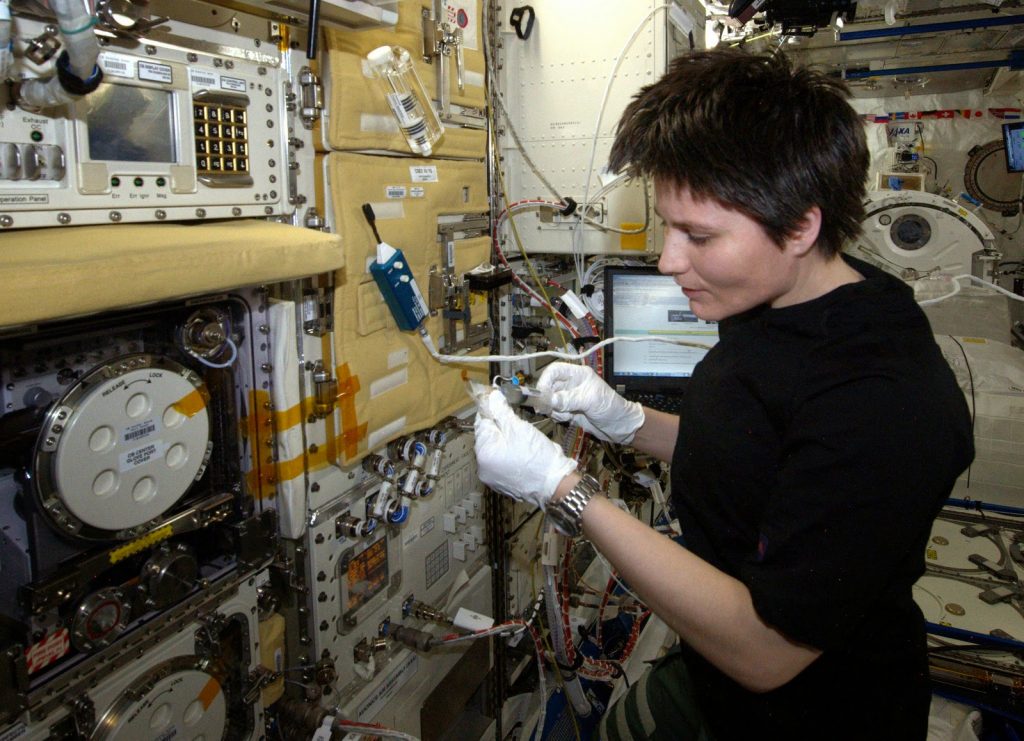L+200: Logbook – Part 5 – hooks open
Thursday
16:00
[cont.] As you might have guessed, there was one last leak check to be performed before undocking: the leak check of the hatch between the descent module and the orbital module. Eventually, we would separate from the orbital module and the descent module hatch would be the one protecting us from vacuum!
Right now, of course, the pressure across the hatch was roughly equal: after all, we had just closed it a few minutes earlier. To perform a leak check, we had to create a pressure differential and to do that we would vent some air from the orbital module into space via the relief valve. Anton selected the closing command on his display, so that he would be able to reclose the valve with a simple button push. Once that was done, I opened the relief valve. On our life support display we watched the pressure in the orbital module drop, until Anton sent the command to close the valve. We had created a pressure differential of about 150 mm Hg and now we would check for any pressure equalization across the hatch: maximum acceptable pressure drop in the descent module was 25 mm Hg in 25 minutes. At the end of the monitoring time we were well within that requirement: leak check passed!
Finally, it was time to wait. Patiently. For almost an hour: a buffer time inserted in our timeline in case of problems. Let’s imagine, for example, an issue with the suit leak check: we would have disconnected and reconnected the gloves, opened and reclosed the helmet, making really sure that no debris was caught in the sealing surface, and then we would have performed the leak check again. Or let’s say that the descent module hatch would have failed the leak check: we would have equalized the pressure, opened the hatch, verified that the sealing surfaces were intact and clean and then reclosed for another leak check. All things that require time. But since everything had gone smoothly in our pre-departure ops, there we were, fully strapped in our seats, waiting.
It’s nice not to be rushed, but of course the “sitting” position in the Soyuz is not the most comfortable one, even for a small person like me – I can imagine how painful it can be for bigger crewmembers to sit for so long with the knees bent towards the chest!
We talked, we joked, we took some glances out the windows, we reviewed procedures for the upcoming reentry, we thought about our friends on the Space Station, still so close, but already belonging to another world.
Then, at 13:17:30 Moscow time I sent the command to turn on the Soyuz docking system. One minute later, at 13:18:30 I sent the next command: Hooks Open. The electrical motors of the docking system started to drive the hooks that kept us attached to the Space Station to the open position. Within a couple of minutes the hooks were fully open and the spring-loaded pushers imparted to our Soyuz a separation velocity: on the periscope view in front of Anton’s central seat we could observe the docking port further and further away. That was it, we were leaving. Good bye Space Station! Good bye Scott, Misha, Gennady! [cont]
Photo: our Soyuz departing from ISS
Futura mission website (Italian): Avamposto42
avamposto42.esa.int
RICORDATE DI VOTARE PER AVAMPOSTO42 AI MACCHIANERA ITALIAN AWARDS!
https://www.facebook.com/photo.php?fbid=822247314539790
(Trad IT) Traduzione in italiano a cura di +AstronautiNEWS
qui: https://www.astronautinews.it/tag/logbook
(Trad FR) Traduction en français par +Anne Cpamoa ici: https://spacetux.org/cpamoa/category/traductions/logbook-samantha
(Trad ES) Tradducción en español por +Carlos Lallana Borobio
https://laesteladegagarin.blogspot.com.es/search/label/SamLogBook
(Trad DE) Deutsche Übersetzung von https://www.logbuch-iss.de
(Trad RUS) Русский перевод +Dmitry Meshkov https://samlogbook-ru.livejournal.com
10/09/2015






